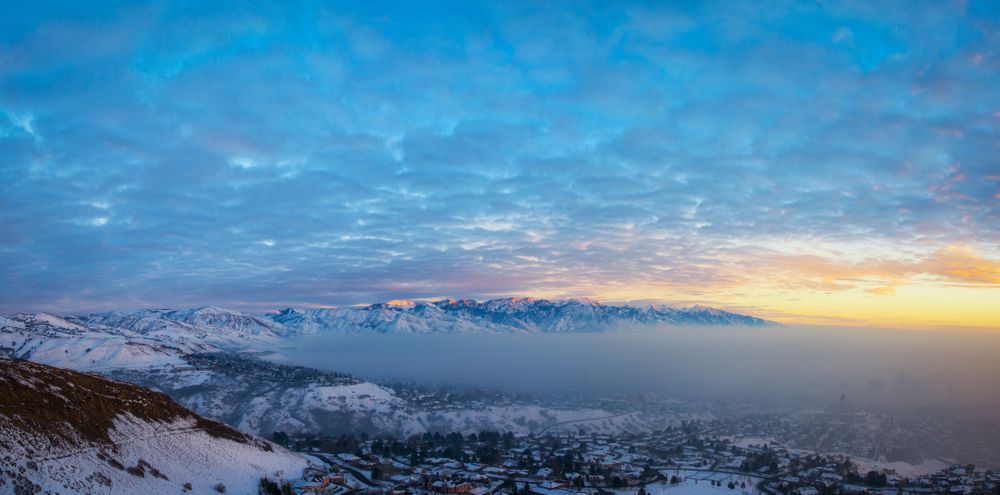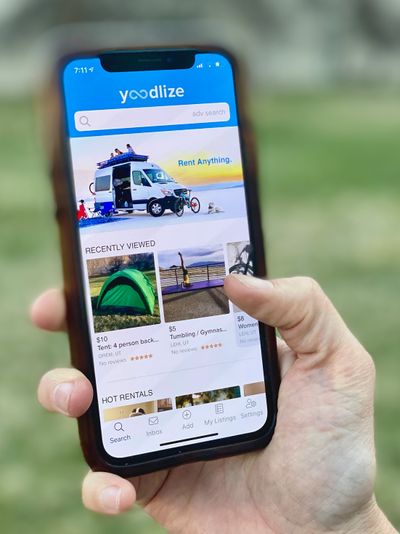This article appears in the Fall 2018 issue of Silicon Slopes Magazine.
Written by Ari Bruening, President/COO, Envision Utah
Ask any Wasatch Front resident what they want to improve about the place they live, and it’s likely you’ll end up discussing air quality. And even though our air is clean most of the year, we have too many days with unacceptable pollution levels. This pollution certainly impacts health and quality of life, but it can also choke a thriving economy by driving out skilled workers and hindering future recruitment. In a 2017 Envision Utah survey of tech employees around the Point of the Mountain and Silicon Slopes area, poor air quality ranked as the number one aspect of Utah that might drive employees out of the state.
Beyond just the Silicon Slopes area, Envision Utah’s 2012–15 statewide visioning effort, Your Utah, Your Future, found that poor air quality is the top factor that Utahns perceive as negatively impacting their lives. But the Your Utah, Your Future effort also brought together the Clean Air Action Team — a group of 38 Utahns representing a diverse range of interests and expertise — to identify strategies for improving air quality. After careful analysis and modeling, as well as input from over 50,000 people, the Clean Air Action Team delivered to Governor Herbert and the Utah Legislature a set of recommendations to clean Utah’s air. The results have been tremendous, and we’ve made a lot of progress, although there’s still a lot of work to do.
So what does it take to clean our air? Here are some of the most important things we can do.
Retool Refineries to Produce Lower-Sulfur Fuel as Soon as Possible
Based on the Your Utah, Your Future recommendations, Governor Herbert met with the CEOs of companies with refineries in Utah, and most of them have now committed to produce cleaner “Tier 3” fuel for Utah — at great expense to the refineries. This will increase the functionality of the emissions control equipment on every vehicle that uses the Tier 3 fuel, resulting in substantial reductions in pollution. We’ll begin seeing the benefits in the coming months.
Eliminate Wood Burning During Inversions
Burning wood has an outsized impact on our air quality. If you have a wood stove or fireplace, please avoid using it during winter inversions. Your neighbors will thank you, and you’ll also avoid breaking the law. UCAIR has programs in place to help swap out your equipment for cleaner natural gas appliances.
Increase the Convenience of Driving Less and Traveling Without a Car
We can encourage people to take public transportation or bike, but people won’t do it until it’s convenient. Convenience consists mainly of two things: infrastructure and community design. In terms of infrastructure, funding for trains, buses, bike lanes, trails, and other infrastructure is critical. But community design matters too; so long as we design our communities primarily around cars, it’s going to be most convenient to drive. Good design involves clustering density around train and bus stations, putting front doors (instead of parking lots) on the street, mixing some housing with retail and office uses so people can walk or bike from one to the other, and ensuring we have a connected grid network of local streets so people don’t have to get on a busy road to go anywhere. We should also think about the merits of free-fare or low-fare public transportation, which may be a relatively affordable way to move people while taking advantage of existing infrastructure.
Shift to Driving Cleaner Vehicles
In most cases, one decision makes a bigger impact on your emissions than any other: what vehicle you buy. Most of us have seen the window stickers on new cars at the dealership, and we’ve probably looked at the fuel economy rating. What most people don’t know is that there’s also a “smog rating” on that window sticker. A higher smog rating is better, with a 10 meaning the car has no tailpipe emissions. Going up just a few points on the smog rating scale can reduce your emissions by more than 50 percent — the same as if you cut your driving in half.
That doesn’t mean you have to compromise on the features you want, whether that’s seating for eight or all-wheel drive, because there are large vehicles with high smog ratings, just as there are small vehicles with low smog ratings. And the gold standard is a car with no tailpipe emissions. Steps like installing workplace charging stations have been shown to make a big difference in people’s willingness to buy electric vehicles, and there are programs — check out Utah Leaders for Clean Air, for example — to make those stations free.
Reduce Emissions from Existing and New Homes
Today, vehicles cause most of our air pollution, but cars are getting cleaner. At the same time, we’re building more and more homes, offices, and stores. All these buildings produce air pollution. If we can improve their energy efficiency, we’ll reduce those emissions. We can also take other steps that make a difference. For example, recently the Utah Legislature mandated that all new water heaters be ultra-low emission starting on July 1, 2018. That won’t affect how much natural gas you burn, but it will reduce your emissions by 70%. And it will only add a minimal additional cost to the water heater.
While many of these strategies are already moving forward, Envision Utah is working with a group we call the “Clean Air Implementation Team” to work through ideas about how to implement others. Visit envisionutah.org for updates on the process. Together, we can continue to clear our air.






